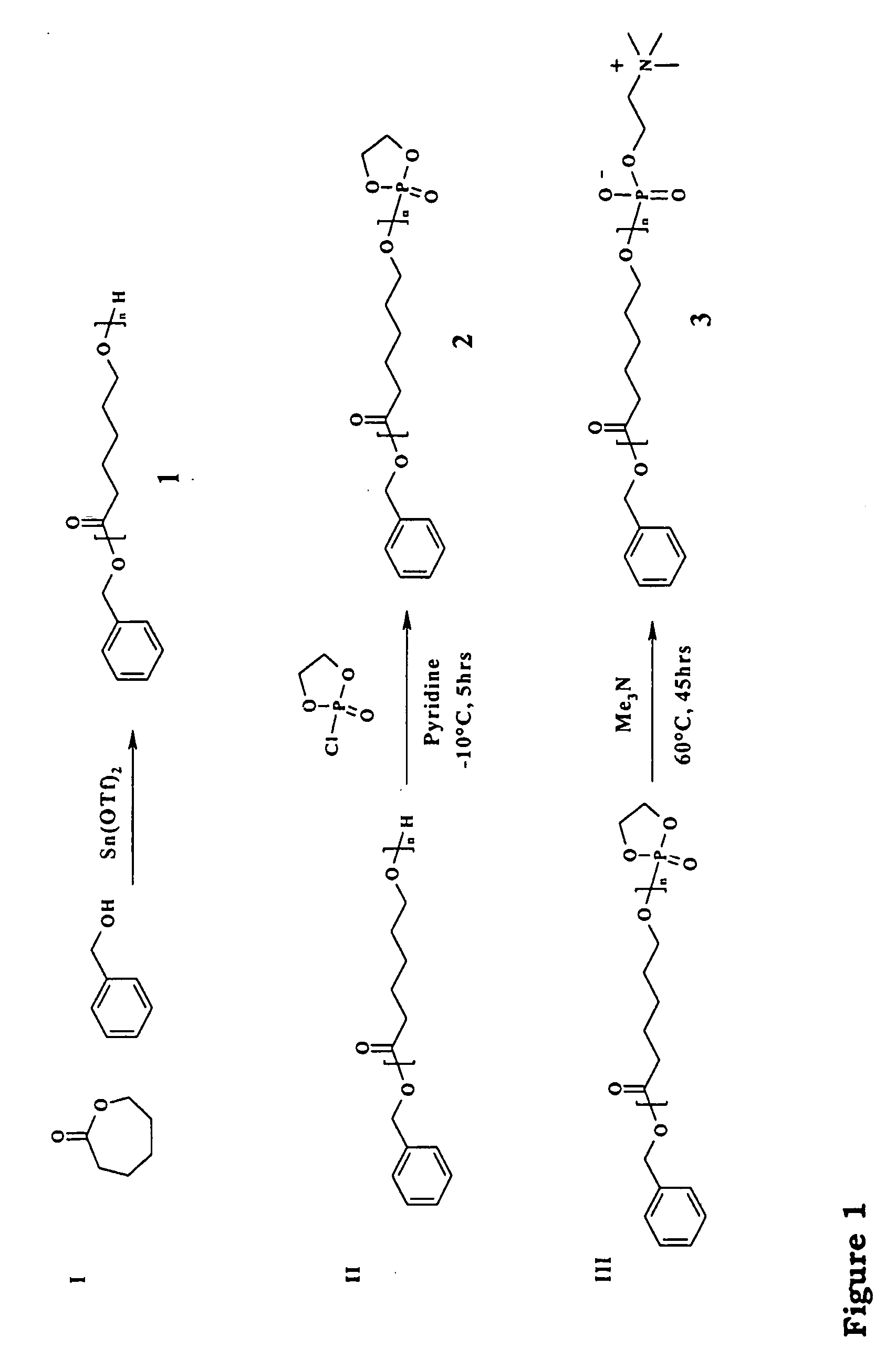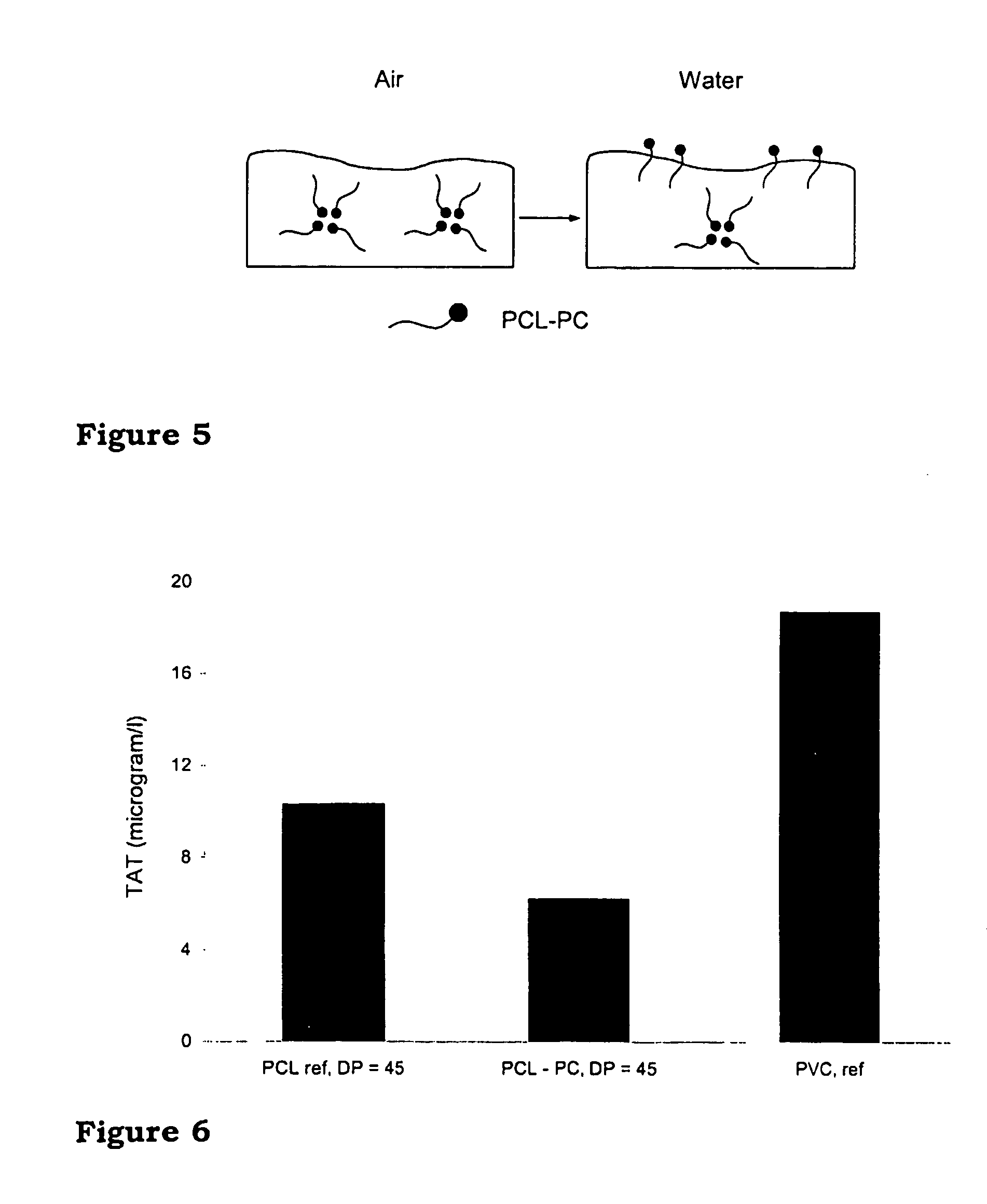New polymers and applications
a new type of polymer, applied in the field of new polymers and applications, can solve the problems of high need for new release systems, high cost, troublesome or even toxic side effects, etc., and achieve the effect of increasing blood-compatibility and high degree of accuracy
- Summary
- Abstract
- Description
- Claims
- Application Information
AI Technical Summary
Benefits of technology
Problems solved by technology
Method used
Image
Examples
Embodiment Construction
[0027] The approach has been to combine the use of phosholipid moieties in combination with biodegradable polyesters in order to prepare a fully biocompatible and biodegradable polymer system. One major goal has been to design macromolecules so they form a certain type of structure depending on the application. Two examples are membranes and micelles.
[0028] The present invention provides polymer compounds comprising at least one biodegradable polyester having a terminal functional group based on the hydrophilic moiety in phospholipid.
[0029] The polymer compounds according to the present invention can be aggregated and have the shape of micelles, vesicles and membranes. The polymer compounds can also be designed such that they emanate from a central core so as to form a dehdrimer. The dendrimer-type of polymer compound forms an essentially spherical particle with said functional groups forming the surface layer of said spherical particle or is concentrated at the surface, thus mimi...
PUM
| Property | Measurement | Unit |
|---|---|---|
| Thickness | aaaaa | aaaaa |
| Fraction | aaaaa | aaaaa |
| Molar mass | aaaaa | aaaaa |
Abstract
Description
Claims
Application Information
 Login to View More
Login to View More - R&D
- Intellectual Property
- Life Sciences
- Materials
- Tech Scout
- Unparalleled Data Quality
- Higher Quality Content
- 60% Fewer Hallucinations
Browse by: Latest US Patents, China's latest patents, Technical Efficacy Thesaurus, Application Domain, Technology Topic, Popular Technical Reports.
© 2025 PatSnap. All rights reserved.Legal|Privacy policy|Modern Slavery Act Transparency Statement|Sitemap|About US| Contact US: help@patsnap.com



